The energy utilization rate of the solar storage system is 22.5%! The latest data from the State Power Investment Corporation on solar storage has been released!
According to the Arctic Star Energy Storage Network: State Power Investment Corporation Huanghe Hydropower has released the 2024 annual data results of the National Photovoltaic and Energy Storage Verification Experimental Platform (Daqing Base).
It is reported that the National Photovoltaic and Energy Storage Experimental Platform (Daqing Base) is located in Daqing City, Heilongjiang Province. It is the world's first outdoor experimental platform for photovoltaics and energy storage, and also the first 'national-level' experimental platform approved by the National Energy Administration in China. It is designed to implement 640 types of experimental plans, with a scale of approximately 1.05 million kilowatts.
The Daqing base started operation in November 2021, officially launched empirical experimental work in January 2022, and has now completed the construction of the first three phases of the project. The total installed capacity has increased to 500,000 kilowatts, with the empirical experimental plan reaching 389 types, further enhancing its role in serving the healthy and high-quality development of the photovoltaic and energy storage industries in China and globally.
Main empirical results of energy storage products
After three years of operation, the efficiency of the first phase lithium battery energy storage system and overall system efficiency are basically stable, but there is a slight declining trend.
The lithium iron phosphate body efficiency is above 94%, and the system efficiency (including plant electricity consumption) is above 74%;
The 0.5C lithium iron phosphate intrinsic efficiency is above 95%, and the system efficiency (including plant power consumption) is above 77%;
The efficiency of the ternary lithium body is above 94%, and the system efficiency (including auxiliary power consumption) is above 66%.
In 2024, the lithium iron phosphate energy storage charged and discharged 271 times throughout the year, of which it was fully charged and discharged for 184 days, accounting for 50.41%; it was shallowly charged and discharged 44 times, accounting for 12.05%; cloudy days resulted in the energy storage not operating for 94 days, accounting for 25.75%. After three years of operation, the energy storage battery capacity showed varying degrees of decline.
The battery operating efficiency from 2002 to 2024 is as follows:
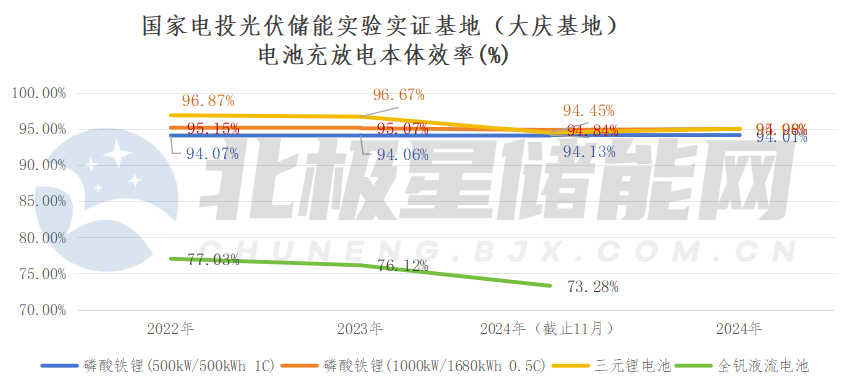
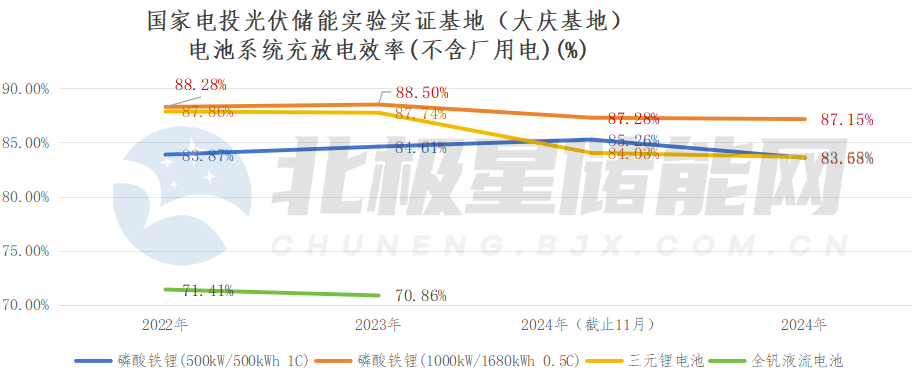
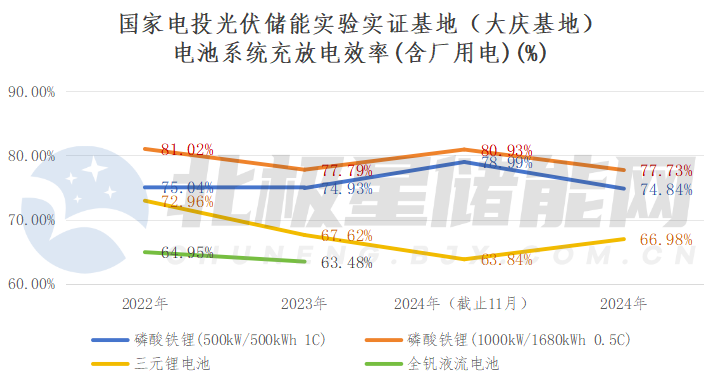
Among them, the capacity decay of lithium iron phosphate energy storage at 1C (500 kW/500 kWh) is 3.46%, while the capacity decay of lithium iron phosphate energy storage at 0.5C (1000 kW/1680 kWh) is 3.44%.
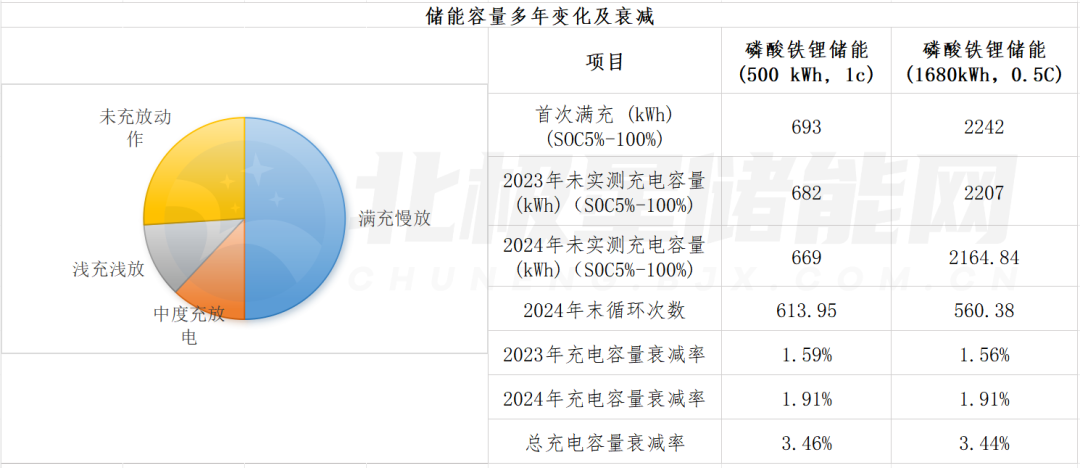
After the technological iteration, the energy storage efficiency of the product has significantly improved. The efficiency of lithium iron phosphate slightly increases with the increase in capacity. The year-on-year cycle efficiency of 0.5C lithium iron phosphate energy storage product improved from 94.99% (120Ah cell) in the first phase to 96.07% (180Ah cell) in the second phase.
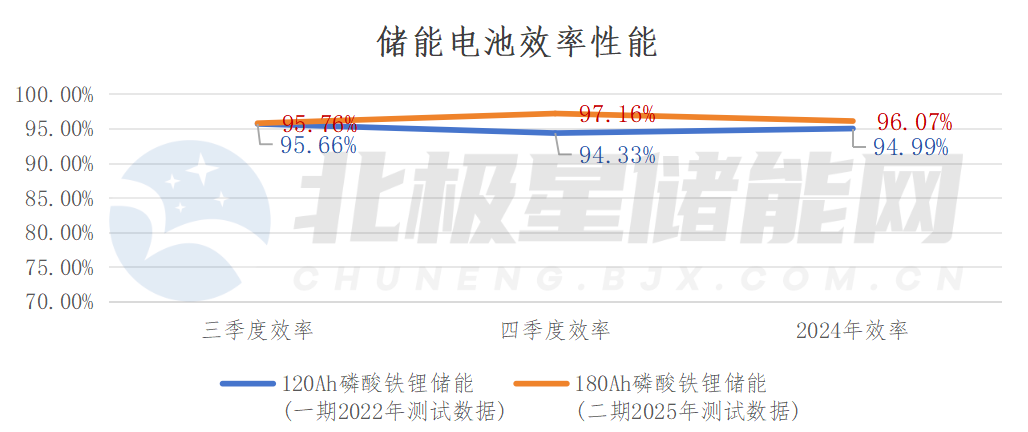
When the energy storage system operates in an environmental temperature range of 0-5¡æ, the system efficiency (including auxiliary power consumption) can reach a maximum of 80%. When the ambient temperature exceeds 25¡æ, the minimum efficiency is 70%, with the environmental temperature having an impact of 10% on system efficiency.
Batteries with a wide temperature range are better suited for the northeastern region. Compared to low-temperature areas, regions with higher ambient temperatures should pay attention to the significant difference in energy loss of storage auxiliary equipment when calculating the return on investment model versus laboratory efficiency.
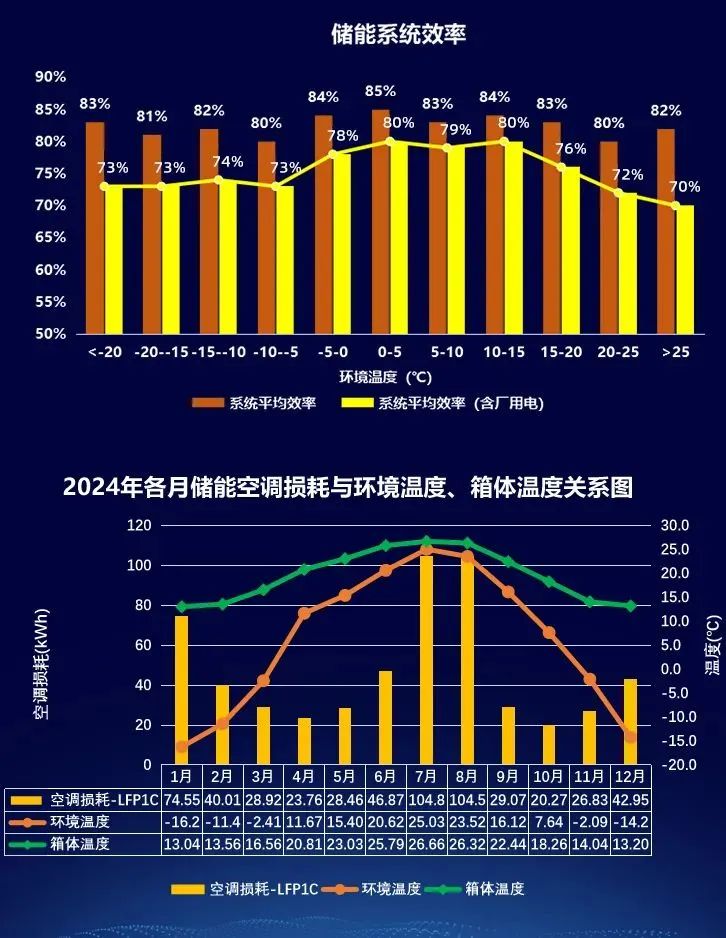
Main experimental results of the light storage system
The output curve of the combined solar and storage system for a single energy storage system is relatively smooth, with better regulation effects. In contrast, mixed energy storage faces issues such as difficulty in coordinating strategies among different types of energy storage manufacturers and inconsistent response adjustment times, resulting in relatively poorer operational performance, which needs further optimization and improvement.
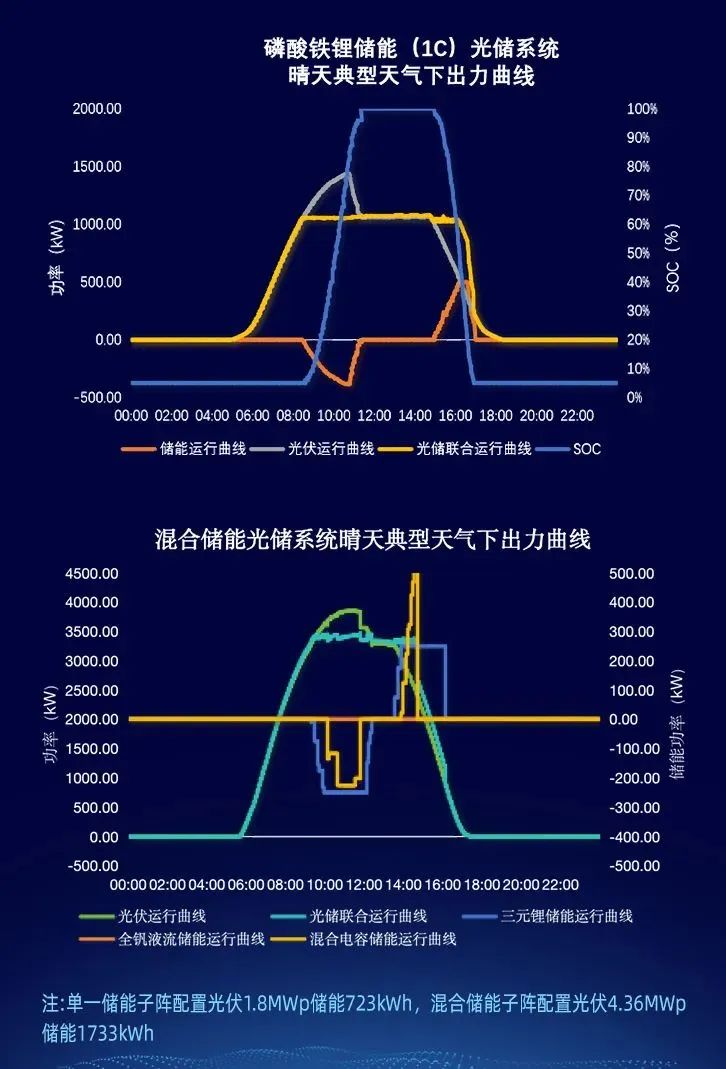
Under overcast conditions, the fixed threshold energy storage system operates almost without action, with an energy storage utilization rate of 0%; the upgraded control strategy in the second phase uses a dynamic threshold, resulting in a smooth output curve on cloudy days and a high energy storage utilization rate of 22.5%.
The simulated power grid scheduling uses a dynamic threshold strategy for energy storage system control, with a maximum power deviation rate of 10.2% and an average deviation rate of 2.7%. The overall execution effect of the strategy is relatively good, achieving a perfect match between the solar energy storage system and scheduling.
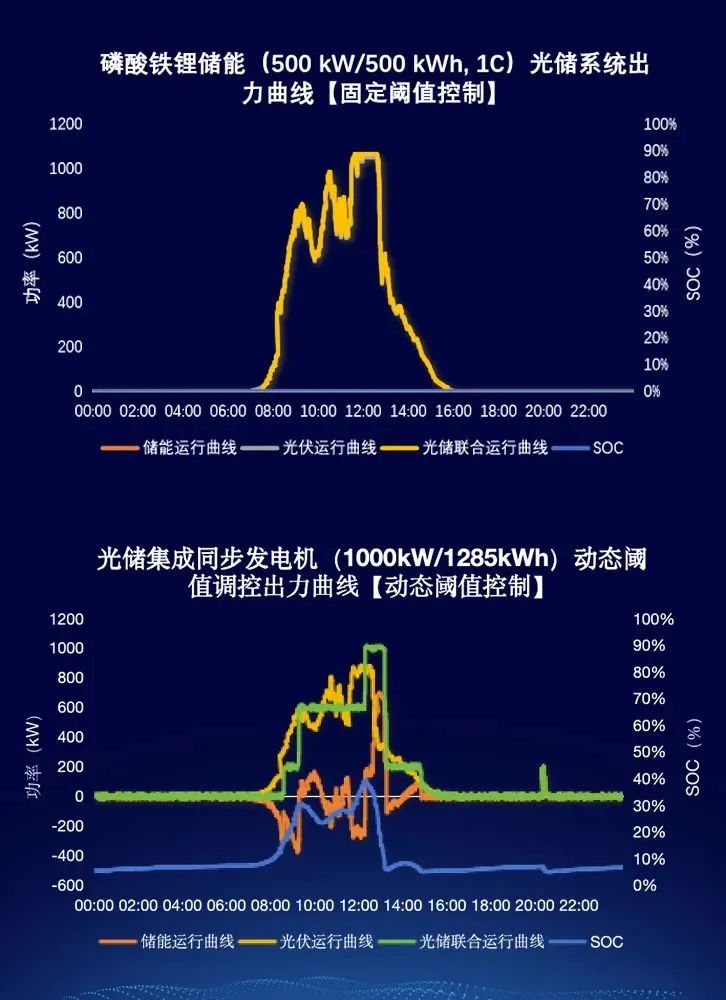
In the 5 megawatt system area, the total capacity on the AC side is 5 megawatts, with a configuration ratio of 2.26. The total nominal capacity of the lithium iron phosphate energy storage is 8400 kilowatt-hours, with a theoretical utilization time of 3017 hours and an actual effective utilization time of 2919 hours.
In the 10 megawatt system area, the total capacity on the AC side is 10 megawatts, with a configuration ratio of 1.77. The nominal capacity of the configured lithium iron phosphate total energy storage is 5180 kilowatt-hours, with a theoretical utilization hour of 2430 hours and an actual effective utilization hour of 2361 hours.
Due to the fixed threshold used in the phase one energy storage control strategy, it cannot fully absorb, resulting in actual operating hours being lower than the designed hours.


